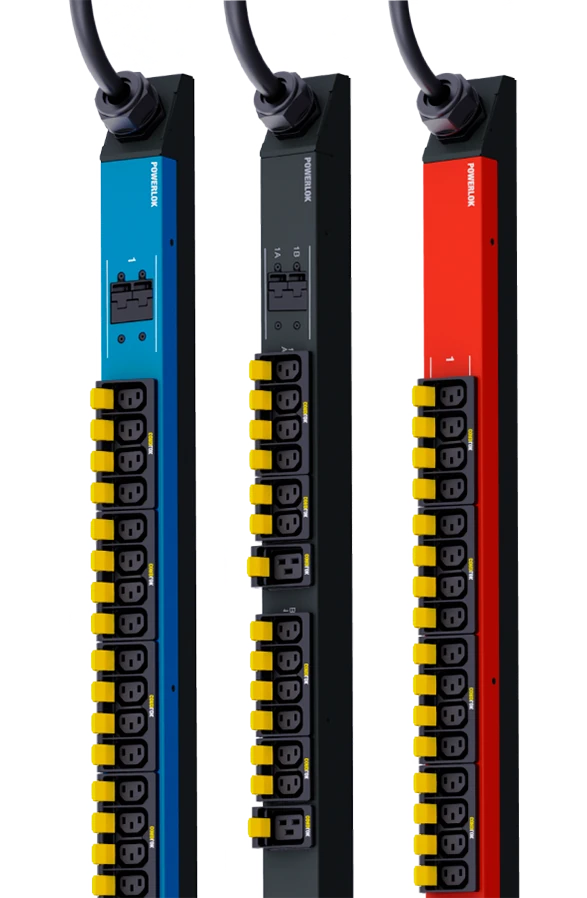Data Center Power Safety: Features of NEMA Standards18 min read

In a data center, the reliability of power is a top priority. Therefore, the various components associated with delivering power to IT equipment (such as power cords and connectors) are important to be aware of, although they are commonly overlooked. Power cords are engineered to comply with many regulations, including safety, heat rating, power delivery, efficiency, functionality, wiring schemes, and circuit specifications. The connectors in the information technology sector have many variations, including the number of wires, wire jacket colors, wire and blade material and gauge, insulation, shielding, connector size, plug casing, and many more. With a broad spectrum of varieties, different standards organizations have developed unified specifications for manufacturers to ensure cables and connectors’ safety and reliability. One of the primary standards applicable for connecting computer and network equipment (servers, network switches) in a data rack to a power distribution unit (PDU) is NEMA connectors.
The electrical products in the United States follow the standards set by the National Electrical Manufacturers Association (NEMA) for the electrical connectors. These standards serve as guidelines in maintaining safety and interoperability of electrical connectors used. Below are the fundamental safety features of NEMA.
NEMA Plugs, Power Cords, and Receptacles
Electrical plugs and receptacles in the United States abide by the safety standards set by NEMA. These connectors differ in shapes, sizes, and combinations of contact blade widths depending on the voltage or electric current they are rated for. The reason for these feature differences is to create unique non-interchangeable combinations of these plugs.
The two most common connectors known domestically are NEMA 1-15P and NEMA 5-15P. These plugs and connectors are constructed through molded rubber bodies and prongs of steel or brass with a zinc, tin, or nickel coating. Plugs and connectors that carry increased voltage are made uniquely by placing the prongs unconventionally.
The two classifications of these connectors are locking and non-locking. Locking connectors are made to fit snugly together and stay connected in the events of accidental pull-out of the plug. This feature makes locking connectors a much reliable choice for plugs in an industrial environment where chances of vibrations and some incidental impact may disconnect a plug. On the other hand, non-locking connectors have straight blades that can be detached by merely pulling back the plug. These types of plugs are common on residential use and consumer electronics.
NEMA Enclosures
Electrical enclosures are a box engineered to protect electrical circuits or equipment from any electrical shocks or problems arising from external factors. The enclosure material may vary depending on the environment and application -these include plastic, stainless steel, steel, aluminum, and more. Enclosures are rated for their protection against hazards and other environmental conditions. In addition to electric shocks, enclosures protect electronic equipment from electromagnetic (EMI) and radio frequency (RFI) interference.
Below are the descriptions of the six commonly used enclosures:
Type 1:
These types are general purpose enclosure for indoor use and are designed to provide protection against dirt and prevent human contact. These may be used in standard load factory environments.
Type 3R:
These enclosures are used for protection against rain, sleet, and damage from ice. Type 3R enclosures are commonly used outdoors for meter cabinets, utility boxes, and filtered fans. These enclosures are made with galvanized steel.
Type 4:
Type 4 enclosures are used for protection against accidental contact with equipment, rain sleet, external dust, dirt, water, and damage from ice. These types of enclosures are seen on wiring enclosures, operator consoles, and hydraulic controls.
Type 4X:
Type 4X enclosures are an upgraded version of type 4 because of its added feature of being corrosion and rust-resistant. These enclosures protect the corrosive environments in marine applications, paper manufacturing applications, industrial food processing, oil and gas drilling, refining and processing, and water treatment.
Type 12:
Type 12 enclosures are non-corrosive and are designed to protect against flowing liquids. These enclosures have an option to be wall-mounted or freestanding.
Type 7:
Type 7 enclosures are designed for hazardous locations defined on article 500-506 of the National Electric Code. These are sometimes called as explosion-proof enclosures intended for use in environments that contain flammable gases and other potentially explosive materials.
Other Safety Features:
- Ground fault circuit interrupter (GFCI) receptacles
- Tamper-resistant receptacles
- AFCI receptacles (Arc Fault Circuit Interrupter)
- Surge protective receptacles
- Weather-resistant receptacles
- Leak-current detection and interruption (LCDI) cordsets
Conclusion
As the reliability of power in data centers is a top priority, it’s important to be aware of the various components that play a part in delivering that power to IT equipment. Some of those components being power cords and connectors. Though commonly overlooked, a lot of thought has been put into the safety and reliability of these components, not only for functionality, but also to abide by the safety standards set by NEMA.
Setting the standard for rack power reliability.
With automated soldering from line input to each receptacle,
PowerLok® eliminates all mechanical connections, making it 270%
less likely to fail than rack PDUs with mechanical terminations.
Setting the standard for rack power reliability.

PowerLok® eliminates all mechanical connections, making it 270%
less likely to fail than rack PDUs with mechanical terminations.

John Hamlin
Freelance Writer
John Hamlin is a freelance writer who specializes in industrial manufacturing. He always enjoys learning about new manufacturing techniques and their applications for the industrial world.
0 Comments